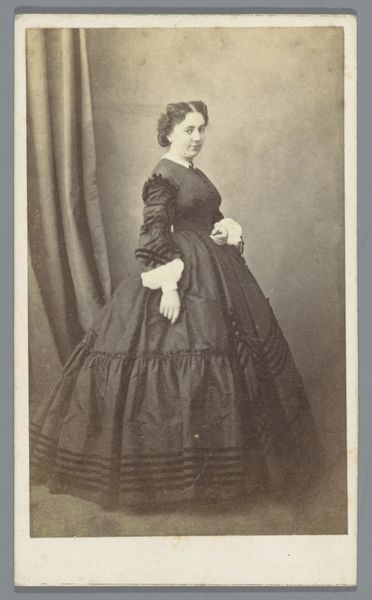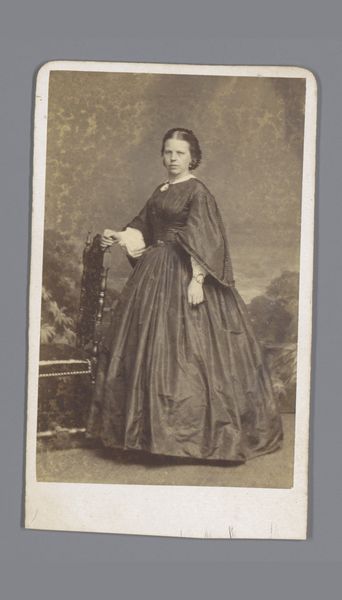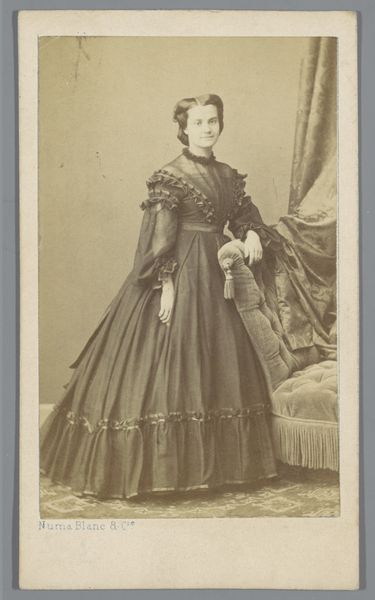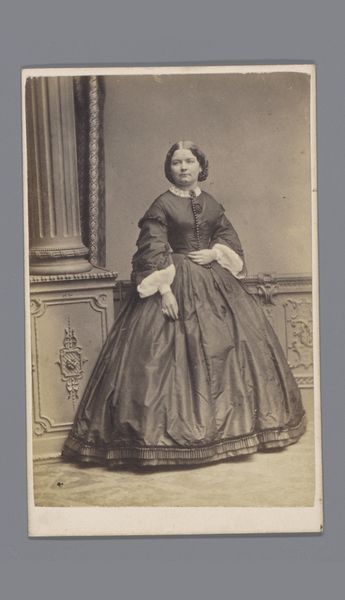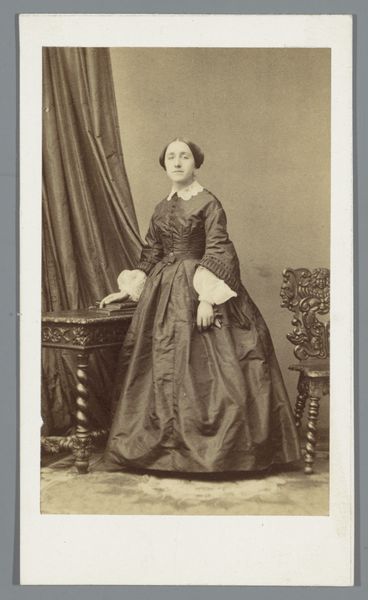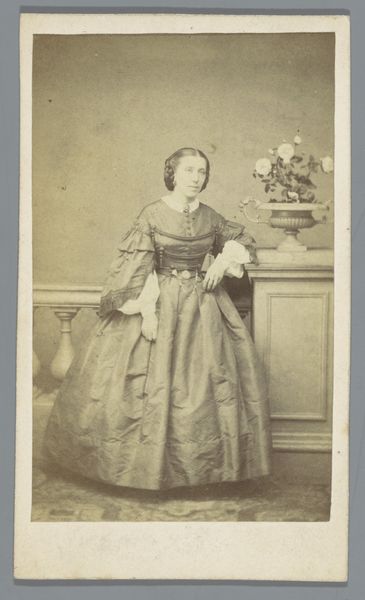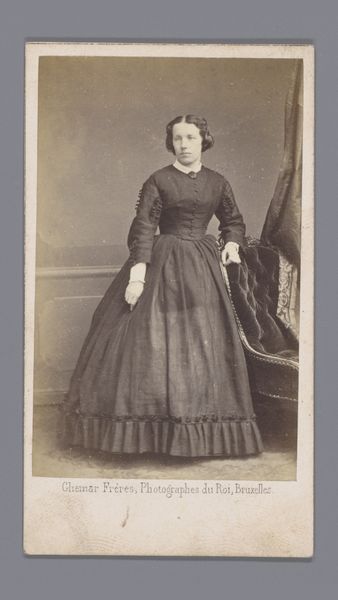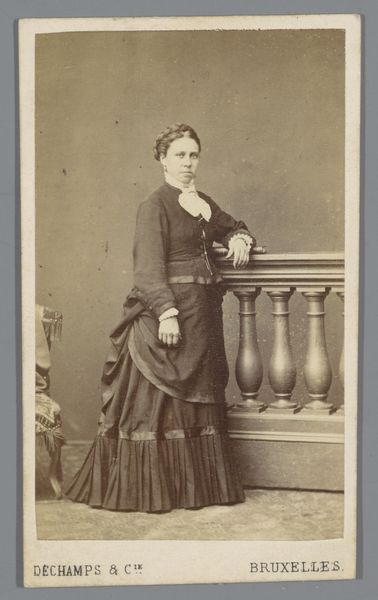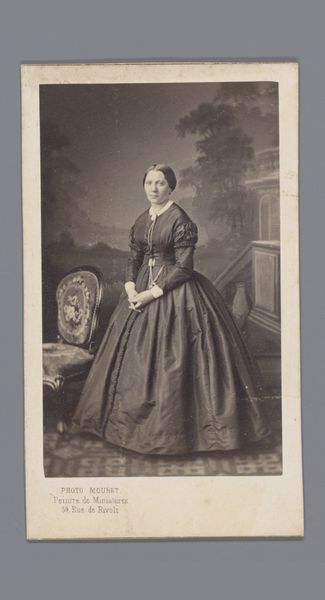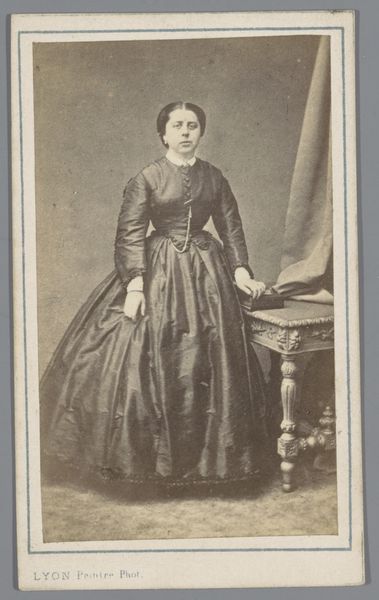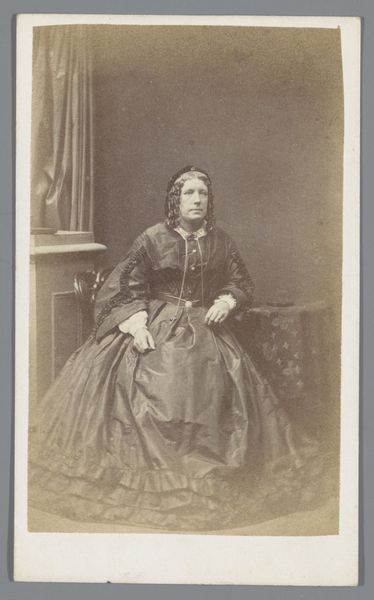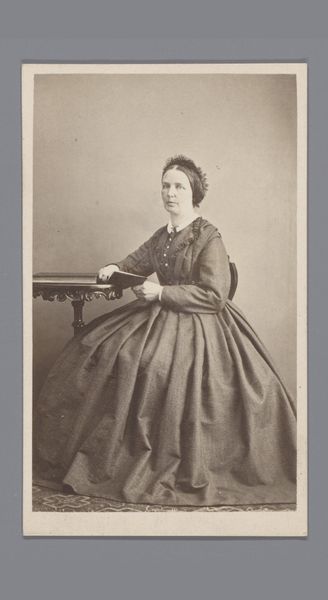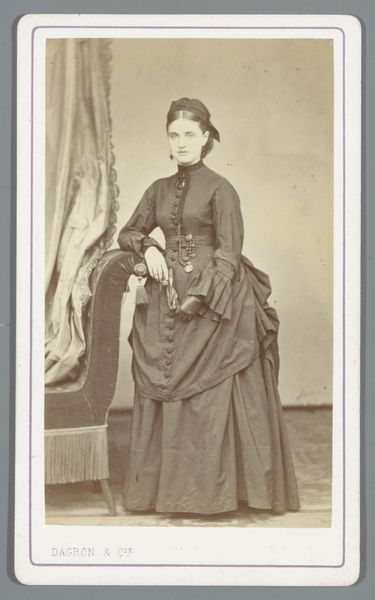
Dimensions: height 104 mm, width 67 mm
Copyright: Rijks Museum: Open Domain
This is a portrait of a woman made by Leopold Haase & Co. in the 19th century using photography. Looking at this portrait, it's important to remember that early photography was a chemical process as much as an aesthetic one. The albumen print, made from egg whites, transformed photography into a commercially viable medium. This process allowed studios like Haase & Co. to churn out portraits, democratizing image-making for a growing middle class. Note the woman's dark dress, likely chosen to contrast with the light background. This was crucial because the albumen process responded differently to various colors. Consider the labor involved: from the photographer meticulously preparing the chemicals to the sitter enduring a lengthy pose. What was once exclusively for the elite, was now within reach for many. This portrait challenges our notions of art as purely individual expression. It is more a product of industrialization and consumption that had, until then, been accessible only to a small group of privileged people.
Comments
No comments
Be the first to comment and join the conversation on the ultimate creative platform.
